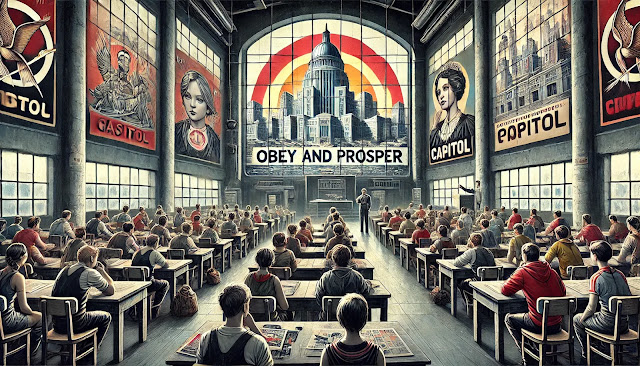How do ice-hockey players make decisions? – Decision-making in an instant and tactically challenging situation
Time pressure affects our decision making
tremendously. When we have a lot of time we ponder things longer, consider many
options and do better choices in general. How does a person decide when there
is practically no time at all, the situation is complicated and changes all the
time?
Decision making in hockey
Ice-hockey is a dynamic game which
requires extraordinary physical skills in addition to ability to do instant
tactical decisions. Furthermore there is challenge with very limited amount of
information, since the player has only time for one glimpse to gather the
essential information.
The choices one player (holding the puck)
has are pretty simple: he can pass it, shoot it or keep it himself. It gets
more complicated when one considers that all ten players on the ice are moving
with tremendous speed. It is essential to be able to predict others movements
at the same time when deciding what to do and how. This sounds rather
challenging and it is not wonder that decision making in ice-hockey has not
been overly researched.
Martell & Vickers (2004)[i] have
done a study using cameras in helmets measuring the eye-movements of the
players. They found out that the best layers used a tactic of two glimpses. On
the way towards the puck they glimpsed once in order to map the situation and
make a tactical plan. When they reached the puck they glimpsed again – very
briefly – in order to check that their plan is still valid. The mid-level and
lower level players glimpsed only once, when they reached the puck. Mulligan et al. (2012)[ii]
reached quite similar results with video cameras in helmets. They also
interviewed players and used video material. They argue, based on their
research, that better players use recognition primed decision-making technique[iii].
(See more about the method from my previous blog post). In short they recognize the situation
(familiar/unfamiliar) and then choose a tactic (familiar/innovative). According
to Mulligan et al. the more players had experience, the more they recognized
situation. Furthermore, the more familiar the situations were the better
choices they made
I think it
is likely that players use also a decision method called “like heuristic” (see more details). If a
tactical choice feels good (player likes it) it will be chosen and vice versa,
if a choice feels bad it is rejected. Relying on feelings is a good way to
decide in a situation when there is no time. The characteristics of ice-hockey
(fast, dynamic and tactical) and both studies above stress the importance of
intuition in hockey decision-making. But
trusting on one’s instincts does not always lead to optimal solutions. When
does it?
Good intuition skills in
sports and making outstanding choices
According
to Mulligan et al. experience is vital in making good intuitive decisions. Williams
et al. (1994)[iv] have noticed that good soccer
players focus on gaining the bigger picture – how the players move and what are
their positions and expected positions. The not-so-talented players focused on the
position of the ball and it’s movements. In other words the good players were
skilled in predictions. Feng et al. (2010)[v] have
also reached the same conclusion in their neural study of fencing. The good focused
on the big picture and updating their tactic constantly. The experience,
ability to see the big picture, tactical tool kit and ability to foresee
other’s actions affect the goodness of intuition. However in fast dynamic
settings it is useless, unless intuition is instant (or at least very fast). Actually the rapidness of intuition
is the key element separating the good players from mediocre player in football[vi], American
football[vii], fencing[viii] and other sports[ix]. However having an instant accurate intuition pretty
useless, if the player is unable to do accurate and fact decisions. Figure
below gathers the elements effecting the accuracy of sports intuition:
[i] Martell, Stephen G & Vickers, Joan N. (2004): “Gaze characteristics
of elite and near-elite athletes in ice hockey defensive tactics”, Human
Movement Science ,22(6),p.689-712, Apr 2004
[ii] Mulligan, Desmond, Janet McCracken, and Nicola J. Hodges.
"Situational familiarity and its relation to decision quality in
ice-hockey." International
Journal of Sport and Exercise Psychology 10.3 (2012): 198-210.
[iii]
Recognition primed decision making, Recognition
Primed (RPD) model of decision-making, Klein
(1999).
[iv] Williams et al., 1994 A.M. Williams, K. Davids, L. Burwitz and
J.G. Williams, Visual search strategies of experienced and inexperienced soccer
players. Research Quarterly for Exercise and Sport, 65 2
(1994), pp. 127–135
[v] Feng, Yan, et al. "Neural mechanisms of Tactics Intuition
Decision-making Predominance of High Level Fencing Athletes." Journal of Medical and Biological
Engineering 30.1 (2010).
[vi] Williams et al., 1994 A.M. Williams, K. Davids, L. Burwitz and
J.G. Williams, Visual search strategies of experienced and inexperienced soccer
players. Research Quarterly for Exercise and Sport, 65 2
(1994), pp. 127–135
[vii] Schmidt & Lee (2005) R.A. Schmidt and T.D. Lee, Motor
control and learning: a behavioral emphasis, Human Kinetics, Champaign, IL
(2005).
[viii] Feng, Yan, et al. "Neural mechanisms of Tactics Intuition
Decision-making Predominance of High Level Fencing Athletes." Journal of Medical and Biological
Engineering 30.1 (2010).
[ix] Raab, Markus & Laborde, Sylvain (2011):
” When to Blink and When to Think: Preference for Intuitive Decisions Results
in Faster and Better Tactical Choices”, Research Quarterly for Exercise &
Sport Mar2011, Vol. 82 Issue 1, p89-98



Making decisions in ice hockey is not just easy. Players should have a great sense regarding how to make decisions in short time. The ice hockey game playing skills split into two categories, Hockey sense and Technical skills. Mostly decision of the player depends upon the skills of the player that how he/she chooses to carry out the decision. Hockey speed and creativity of the players makes them take right decisions in very short time.
ReplyDelete